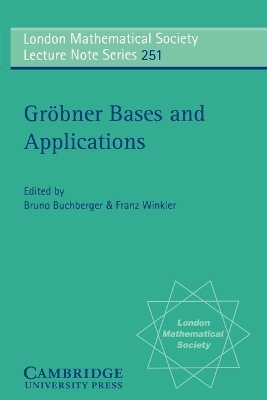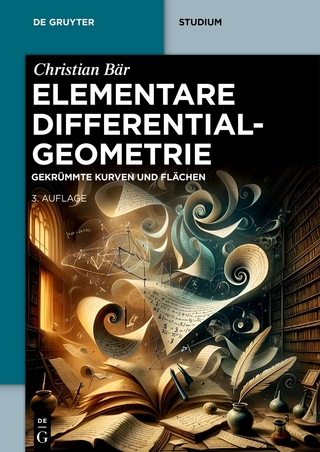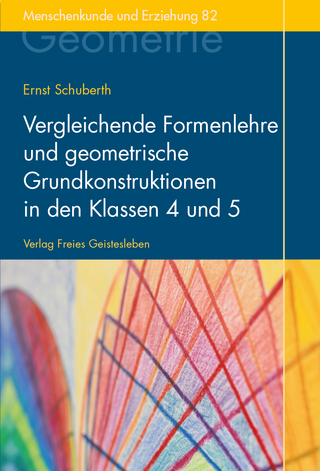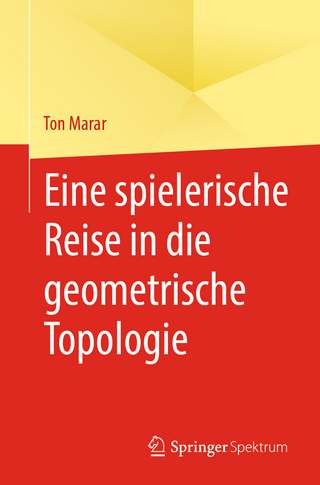
Gröbner Bases and Applications
Cambridge University Press (Verlag)
978-0-521-63298-0 (ISBN)
The theory of Gröbner bases, invented by Bruno Buchberger, is a general method by which many fundamental problems in various branches of mathematics and engineering can be solved by structurally simple algorithms. The method is now available in all major mathematical software systems. This book provides a short and easy-to-read account of the theory of Gröbner bases and its applications. It is in two parts, the first consisting of tutorial lectures, beginning with a general introduction. The subject is then developed in a further twelve tutorials, written by leading experts, on the application of Gröbner bases in various fields of mathematics. In the second part are seventeen original research papers on Gröbner bases. An appendix contains the English translations of the original German papers of Bruno Buchberger in which Gröbner bases were introduced.
Preface; 1. Programme committee; Introduction to Gröbner bases B. Buchberger; 2. Gröbner bases, symbolic summation and symbolic integration F. Chyzak; 3. Gröbner bases and invariant theory W. Decker and T. de Jong; 4. Gröbner bases and generic monomial ideals M. Green and M. Stillman; 5. Gröbner bases and algebraic geometry G. M. Greuel; 6. Gröbner bases and integer programming S. Hosten and R. Thomas; 7. Gröbner bases and numerical analysis H. M. Möller; 8. Gröbner bases and statistics L. Robbiano; 9. Gröbner bases and coding theory S. Sakata; 10. Janet bases for symmetry groups F. Schwarz; 11. Gröbner bases in partial differential equations D. Struppa; 12. Gröbner bases and hypergeometric functions B. Sturmfels and N. Takayama; 13. Introduction to noncommutative Gröbner bases theory V. Ufnarovski; 14. Gröbner bases applied to geometric theorem proving and discovering D. Wang; 15. The fractal walk B. Amrhein and O. Gloor; 16. Gröbner bases property on elimination ideal in the noncommutative case M. A. Borges and M. Borges; 17. The CoCoA 3 framework for a family of Buchberger-like algorithms A. Capani and G. Niesi; 18. Newton identities in the multivariate case: Pham systems M.-J. González-López and L. González-Vega; 19. Gröbner bases in rings of differential operators M. Insa and F. Pauer; 20. Canonical curves and the Petri scheme J. B. Little; 21. The Buchberger algorithm as a tool for ideal theory of polynomial rings in constructive mathematics H. Lombardi and H. Perdry; 22. Gröbner bases in non-commutative reduction rings K. Madlener and B. Reinert; 23. Effective algorithms for intrinsically computing SAGBI-Gröbner bases in a polynomial ring over a field J. L. Miller; 24. De Nugis Groebnerialium 1: Eagon, Northcott, Gröbner F. Mora; 25. An application of Gröbner bases to the decomposition of rational mappings J. Müller-Quade, R. Steinwandt and T. Beth; 26. On some basic applications of Gröbner bases in noncommutative polynomial rings P. Nordbeck; 27. Full factorial designs and distracted fractions L. Robbiano and M. P. Rogantin; 28. Polynomial interpolation of minimal degree and Gröbner bases T. Sauer; 29. Inversion of birational maps with Gröbner bases J. Schicho; 30. Reverse lexicographic initial ideas of generic ideals are finitely generated J. Snellman; 31. Parallel computation and Gröbner bases: an application for converting bases with the Gröbner walk Q.-N. Trân; 32. Appendix. an algorithmic criterion for the solvability of a system of algebraic equations B. Buchberger (translated by M. Abramson and R. Lumbert); Index of Tutorials.
| Erscheint lt. Verlag | 26.2.1998 |
|---|---|
| Reihe/Serie | London Mathematical Society Lecture Note Series |
| Verlagsort | Cambridge |
| Sprache | englisch |
| Maße | 153 x 224 mm |
| Gewicht | 820 g |
| Themenwelt | Mathematik / Informatik ► Mathematik ► Geometrie / Topologie |
| ISBN-10 | 0-521-63298-6 / 0521632986 |
| ISBN-13 | 978-0-521-63298-0 / 9780521632980 |
| Zustand | Neuware |
| Haben Sie eine Frage zum Produkt? |
aus dem Bereich


